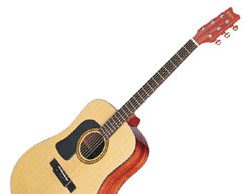What Are the Different Types of Musical Instruments?
What Are the Different Types of Musical Instruments?
 If you know anything about musical instruments, you know that there are a few separate categories that separate many of the instruments by their common characteristics. If you don’t know anything about musical instruments, however, you probably don’t even know about these essential instrument “groups.” If you’re thinking about taking up an instrument, it might help you to take a look at the different kinds of instruments to see which appeal to you: if you enjoy the oboe, for instance, but want to take up something a little more mainstream, you might upgrade to a similar “woodwind” instrument like the clarinet or saxophone.
If you know anything about musical instruments, you know that there are a few separate categories that separate many of the instruments by their common characteristics. If you don’t know anything about musical instruments, however, you probably don’t even know about these essential instrument “groups.” If you’re thinking about taking up an instrument, it might help you to take a look at the different kinds of instruments to see which appeal to you: if you enjoy the oboe, for instance, but want to take up something a little more mainstream, you might upgrade to a similar “woodwind” instrument like the clarinet or saxophone.
That’s why, in this article, we’ll take a look at the different categories of musical instruments available and teach you what kind of characteristics they usually share. If you want to learn more, you might considering checking out this article from eHow.com.
Woodwinds:
Woodwinds get their name from the facts: many of these instruments are made from wood (though not all), and they make music from your wind. No, not that wind – the wind coming out of your mouth! Each instrument will require a different kind of “kiss” in order to generate the best sounds possible. Many of these instruments fall under the “reed” instrument categories: you’ll find yourself using a reed in order to generate the sound. Reed instruments include saxophones, clarinets, and oboes, while “other” woodwinds include flutes and piccolos. The sound produced by woodwinds can range from the jazzy saxophones to the light classical sounds of the clarinet. Many classical composers also frequently employed woodwind instruments like bassoons in their works.
Strings:
Stringed instruments don’t vary in the quality of their sound like woodwinds do, but they do vary widely in terms of pitch. You have low instruments such as the bass and the cello as well as lighter instruments like the violin and the viola. It’s also worth considering that the piano is actually a stringed instrument: the keyboard moves small mallets within the piano to bang against the strings in order to produce the familiar sound. The harpischord, similar in appearance to the piano, works in the same fashion but plucks the strings instead of pounding them. Guitars are also string instruments, especially the acoustic guitar, which is a pure string instrument. Other less-traditional instruments (at least by Western standards) can include the sitar.
Percussion:
Percussion instruments can be the most exotic of them all, producing sounds that are generally meant to augment the rest of the sounds and produce a steady beat, but can also become features in and of themselves. In works such as The Dave Brubeck Quartet’s Take Five, you’ll hear a section that highly features the drums, making them the focal point of the piece for a brief period. Percussion instruments don’t just include the drum set, though. They also include the timpani (traditionally a classical instrument) and the triangle.
Brass:
Brass instruments include trumpets, trombones, tubas – a lot of the “gold” colored instruments are brass instruments. An exception, of course, is the saxophone. The big, colorful sound of brass instruments is well-suited for outdoor events like parades and sports: across the United States, high school marching bands make frequent use of brass instruments in order to cut through a lot of the sounds a crowd will be making.
Vocals:
Vocal instruments frequently refer, actually, to you: you take your voicebox with you wherever you go. You can turn your voice into an instrument by singing. Throughout classical music, singers were divided up by the pitch they were best suited to producing: you’ve probably heard of altos, sopranos, baritones, tenors, and basses. Today, voices are used in many different ways, and are even electronically modified in order to produce a desired effect.


